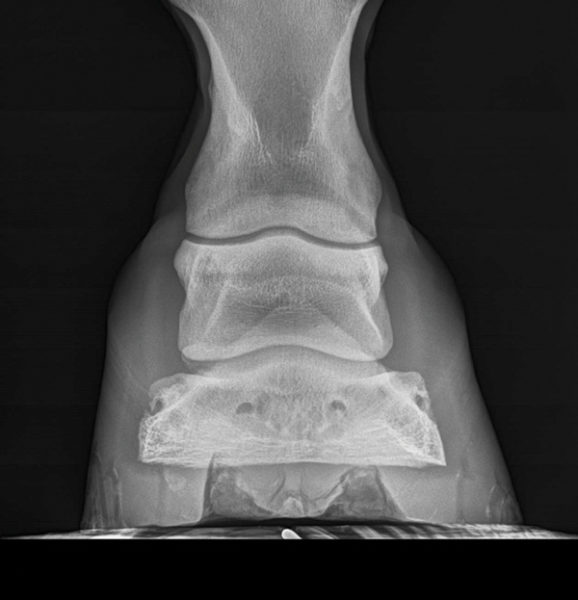American Farriers Journal
American Farriers Journal is the “hands-on” magazine for professional farriers, equine veterinarians and horse care product and service buyers.

Farriers should not be asked nor attempt to evaluate a bad radiograph.
If you receive a bad radiograph, talk with the veterinarian first to rectify the problem.
Omitting measurements on radiographs promotes communication between the vet and farrier, while still providing important information.
When a veterinarian sends you a digital radiograph, what should you be focusing your attention on?
After 29 years in equine practice, Mocksville, N.C., equine veterinarian Jim Meeker has found that there are five key parameters that farriers should be looking for on a radiograph:
Meeker conducts monthly meetings at his Davie County Large Animal Hospital in which he and local farriers work together on a variety of cases. Introducing these five parameters has led to improved relations and communication.
“I know it’s not a standardized system, but the five parameters are very helpful for the farriers in the area,” says the owner of Davie County Large Animal Hospital. “The farriers are getting much better at evaluating hoof balance.”
Meeker emphasizes that these parameters aren’t exhaustive. Their purpose is to initiate conversation and help farriers recognize specific points of interest.
“There are a number of other points that are important,” he says. “These are just the five simple ones that if any farrier should look at a radiograph, they will be able to talk about and evaluate these parameters for the horse and veterinarian.”
In order…